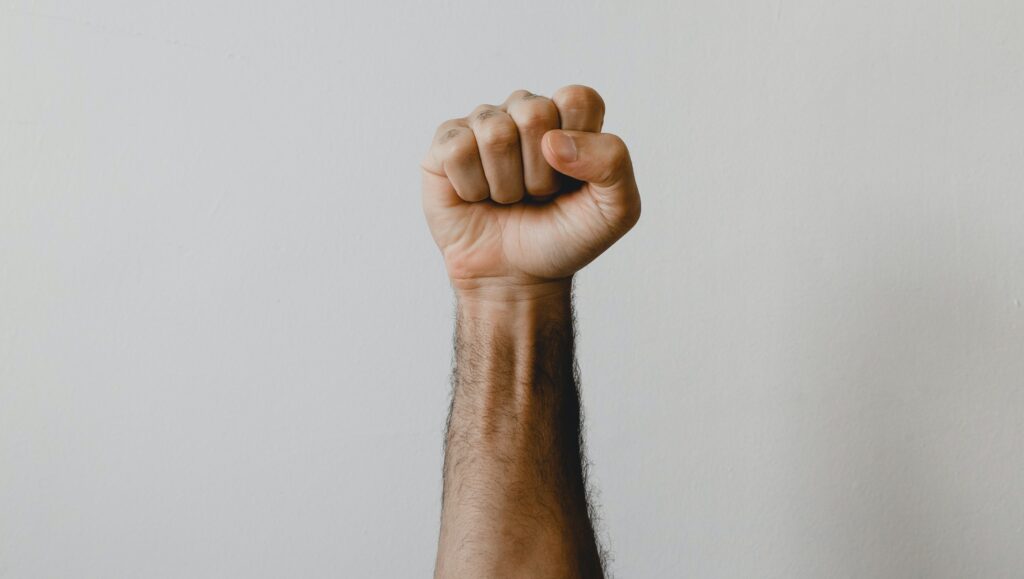
Extremes of forgiveness
Abaigael Lorge says only heroic acts of reconciliation can truly heal traumatised and brutalised societies.
Anne-Marie Uwimana remembers the day as though it were yesterday – even though 25 years have passed. The day she watched as her neighbour, Celestin Habinshuti, butchered her two children to death in her home in Rwanda.
The same man was also involved in the murder of her other two children, and her husband.
When he was released from his prison sentence after the conflict, she understandably did not want to meet with him. With time, however, she came to realise that the only way for her to move on was to let go of those stifling feelings of animosity and resentment. While sharing her story at Kibirizi Catholic Church in Rwanda five years ago, she said she forgave her neighbour ‘for the sake of healing’.
Anne-Marie chose to forgive in order to heal, in order to let go of the idea of getting revenge, and thus accept coexistence with Celestin Habinshuti. Her story is a powerful starting point in understanding the challenges which come with restoring broken bonds in post-conflict societies, especially in those with severe divisions amongst groups and individuals.
Such divisions are often founded on the narratives that are told during the conflict: about who is fighting against whom, about who are the bad guys and who are the good ones. These narratives cannot be easily ended in the way that violence can be. Signing a peace treaty, or recognising the victory of one side over the other, does not suddenly eliminate the narratives which were fueling the divisions and the memories of the perpetrated violence.
Divisions formed before and during a conflict tend to carry on into the post-conflict period and hinder the rebuilding of connection between people.
Such divisions perpetuate hostility, tension and uncertainty.
The narratives which led to division hinder later reconciliation.
Intra-community conflict, sometimes tagged as civil war or civil conflict, either originates from, or creates, ethnic, national or religious divisions within society. During the conflict, these divisions are intensified as people begin to associate themselves with certain groups or identities. They choose to believe in particular ideas, values and perceptions of the world put forward by their group. What people know or believe about each other, and therefore their perceptions of who is trustworthy, begin to change. And so, an ‘us’ versus ‘them’, a ‘good guy’ versus ‘bad guy’ narrative is formed, pitting one side against another.

These types of narratives which opposing sides fabricate about the causes, the evolution and the ending of their conflict inevitably impact future relations.
Civil relations – where bonds have been restored and connections reformed – are possible where these narratives are consistent across conflicted groups. But intra-community conflict means there are two or more sides, which tend to have different views about their disputes.
These contesting narratives describe past grievances and violence which groups inflicted on each other very differently, honouring and remembering only suffering and injustice inflicted upon one’s own group and justifying that inflicted on the other. Repairing bonds and social connections in the midst of these one-sided narratives is a major problem for peace keepers.
The Rwandan Genocide was an intra-community conflict; it was a brutal and savage outpouring of hatred between the Hutus and the Tutsis. For a Tutsi, the narrative developed during the conflict went something like this: the Hutus are brutally murdering the Tutsi minority, seeking to eliminate us, and ultimately cleanse Rwanda of us.
On the other hand, the Hutu narrative went something like this: The Tutsis are a threat, they are a dangerous group wishing to seize political power at the expense of our existence.
Each narrative is something of a good guy versus bad guy story. Each side believes that it is being threatened by the other. Because this narrative emerged before the conflict and continued to develop throughout, the division between the two tribal groups was particularly severe by the time the post-conflict period came around. In fact, the end of the violence did not mean the end of division or conflict between the two sides.
As Ingrid Samset wrote in her book Building a Repressive Peace: The Case of Post-Genocide Rwanda: “Rwanda was certainly not ‘post-conflict’ in the first 15 years after the genocide in 1994. Collective violence occurred repeatedly, especially in the first four years.”
So how did the underlying conflict end? Even after the Tutsis had seized control of the government, or, more generally, after peace treaties had been signed between the warring parties, the conflict was not over. While the violence may have eased, disputes persisted.
So does the post-conflict period begin once the narratives and the divisions from the conflict are eliminated? Or is the post-conflict period one in which these divisions are being addressed?

Post-conflict societies seek to heal broken bonds and mend ruptured relationships, ultimately to rebuild connection. Truly, this is the fundamental way for a fractured society to maintain peaceful relations; if the process fails, the former foes will remain on the brink of violence as tensions and feelings of uncertainty persist.
Rebuilding connection in a post-conflict society can be divided into the conversation stage, the forgiveness stage, and the acceptance stage, each of which comes with its own particular challenges.
Perhaps the most difficult is the first stage and for the sake of brevity I will focus only on this. The problem with starting a conversation in a society damaged by division, violence and conflicting narratives is that often people are overwhelmed by sentiments of resentment, bitterness and vengeance – as Anne-Marie Uwimana once was.
People do not want to open conversation with the other side so long as they hold onto the ‘us’ versus ‘them’ narrative and continue to see the other side as the ‘bad guys’. Yet, as the historian and philosopher Yuval Noah Harari once wrote: “History isn’t a single narrative, but thousands of alternative narratives. Whenever we choose to tell one, we are also choosing to silence others.”
I began with Anne-Marie’s story as a tale of forgiveness. Let me end with it too. Hers is a story about abandoning the possibility of getting even and accepting coexistence with someone who has caused you harm.
Anne-Marie sought to bridge the divide which had formed between her and her neighbour during the conflict. With time, she opened up conversation with him; with courage, she forgave him; and now, she accepts coexistence with him.
Her story, while not the only one, remains unique, shocking and remarkable.
It is also one which proves that, however deep the tensions and divisions go, with goodwill (sometimes heroic goodwill) and courage they can be overcome. History can be re-made by forgiveness.
This is a slightly edited version of an article which was first published in BizGees, a team of professionals using their commercial expertise to support refugee entrepreneurs in new and innovative ways. It is reproduced here with their permission. For the original article, see here.
Like what you’ve read? Consider supporting the work of Adamah by making a donation and help us keep exploring life’s big (and not so big) issues!
Abaigael Lorge
Abaigael Lorge is a first year War Studies student at King's College, London. She researched and wrote this article as part of the BizGees & War Studies Department Internship programme.

